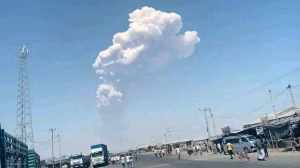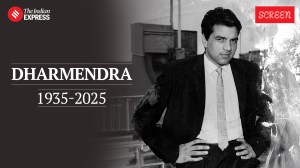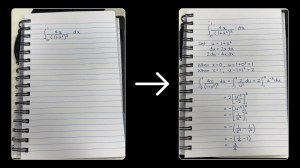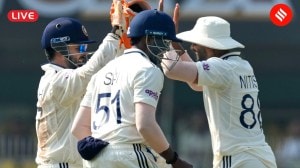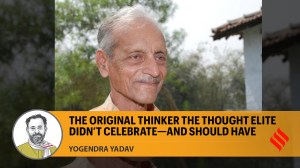The death of an officer
Did Sumit Kohli,an army captain in Kupwara,kill himself or was he murdered? Did his death have anything to do with the killing of four porters in an alleged fake encounter in 2004? With Defence Minister A K Antony ordering a reinvestigation into Kohlis death,The Sunday Express pieces together the mysterious story of the young captain and four missing porters.
The postman brought news. A letter,dated June 20,2005,that said Bhushan Lal had been killed in a fake encounter in Lolab on April 20,2004,and anonymously signed Insaaf Ka Pujari. That was the first time retired Lance Naik Madan Lal had heard of his son Bhushan ever since he left his home in Manguchak village near Jammu on April 12,2004. Bhushan Lal and three other men from Jammu had left for Lolab in north Kashmirs Kupwara district to work as porters for armymen.
Eight days later,they were allegedly killed in the fake encounter and passed off as terrorists. The letter had grisly details of how the porters were killed,how two of them were shot in the face,the place they were buried and the army officers allegedly involved. The families of the other three porters got similar letters,which plunged them into a spiral of events,ending in the death of Captain Sumit Kohli in April 2006.
Kohli was found dead in his quarters,four months after he got a Shaurya Chakra for an operation he led in March 2005. He was found in a slump,sitting on his chair,with an AK-47 rifle at his feet. Now with Defence Minister A K Antony ordering a re-investigation into the death of the young captain,old wounds have reopened.
Madan Lal and the families of the other portersRam Lal,Satpal and Ashok Kumarbelieve it was Kohli who sent the letter and that he was killed because he would have exposed the fake killings.
Its a belief Kohlis family too holds on to. Kohlis mother Veena claims her son,who was the duty officer at the time of the encounter,had assured the families of the porters that he would help them get justice. On August 28 this year,Veena and her daughter Namrata met Defence Minister
A K Antony to demand an independent probe into Kohlis death.
On every wall of the Kohlis home in Chandigarhs Sector 40 are photographs of Kohli and framed newspaper clippings that show him receiving the Shaurya Chakra. The photographs are from a happier time,before they got that call on April 30,2006.
That day,the Kohli family was on their way to a family function when an officer from their sons unit called to say he had been found dead in his room at Lolab in Kashmir. The army said he had committed suicide.
Another tragedy followed the next day. Kohlis father Satish suffered a brain haemorrhage and passed away on May 4. Kohli was cremated on May 3,his father the next day.
Suicide or murder?
The army maintains Kohli was depressed and killed himself. After Captain Kohlis death,the army set up an inquiry team,which concluded that the officer was highly depressed due to marital problems and had killed himself.
The inquiry team found several anti-depressants in his room. The teams report says Kohli hadnt reported his medical condition to his Commanding Officer Rahul Pandeyconsidered a breach of discipline in the army.
Pandey,who is now retired,says he was in touch with Kohlis father but he never mentioned his sons illness. His father used to tell me that in the army,I was like Sumits dad. If only he had shared more personal details,like Sumits marital troubles,perhaps things would have been different, he says.
Pandey also denied Kohli was the duty officer when the encounter took place. It is a matter of record that Sumit was on leave at the time of the encounter, he says.
Besides the medicines,Pandey says,the inquiry team found several photographs of Kohlis ex fiancée and only three pictures of his wife. The inquiry team put all this together to conclude that he was depressed and had committed suicide.
But the Kohlis would hear none of this theory. Why would their son,who was awarded a Shaurya Chakra just four months ago,kill himself?
Sumits medical examination days before the incident showed him in SHAPE-1 (perfectly fit). Why did the medical report say that if he was depressed, asks Kohlis sister Namrata.
His mother Veena admits his wife Deepika moved out of the house after his death and now lives with her parents and her four-year-old son. But Veena denies the family problems were so grave that Kohli could have killed himself.
Sumit called me that morning (April 30,2006). Whenever he went for an operation or patrolling,he would call and say he would call once he got back. That morning,he said the same thing, says Veena.
Veena says she has strong reasons to believe Kohli was murdered. First,she says,they received an anonymous letter,a month after Kohlis death,that said he feared for his life since he knew details of an alleged fake encounter. They received another letter after that and a few anonymous phone calls.
Even before his death,says Kohlis sister,he had hinted that all was not well. He once said,This time if I go back to my unit,I dont know if they will let me come back, says Namrata. He had then told us of a tussle he had with his Commanding Officer Colonel Pandey, says Namrata,who teaches English in a private institute.
On August 10,2010,Veena got Kohlis post-mortem report after she moved the Delhi High Court. The Court of Inquiry proceedings and the autopsy report are enough to raise suspicion. There are two medical reports which are contradictory. According to one,the (bullet) entry wound was on the left side of the chin. But the other report said it was on the right side of the chin. The post-mortem report is too general and makes no specific mention of the woundsentry wound,exit wound,their shapes and sizes. There is also no mention of blackening,which is obvious when a bullet is fired from close range, says Veena.
The porters killing
The army continues to stick to its stand that Kohlis death had nothing to do with the missing porters,saying different high-level probes have ruled out foul play.
According to army records,an encounter did take place on April 20,2004,in Lolab by the 18 Rashtriya Rifles,but only two terrorists were killed. The bodies were photographed and buried after the encounter. However,two weeks later,two families in Ganderbal claimed the bodies. The family members were brought in and they identified the bodies. The two bodies were then exhumed and handed over to the Ganderbal residents.
In 2005,after the anonymous letter set off protests in Jammu,an inquiry team was set up and relatives of the missing porters were brought from Jammu,along with an eyewitness who claimed that he would recognise the armyman who had hired the porters.
The entire 18 RR unit was lined up but the eyewitness was not able to identify anyone, a senior army officer told The Sunday Express.
Thus,the inquiry failed to establish two vital things that were central to the fake encounter allegations. First,that the four missing people had actually been hired by the 18 RR unit and second,that the two bodies from the April 20,2004,encounter belonged to the Jammu families. The inquiry was closed.
But Madal Lal,father of Bhushan Lal,one of the missing porters,says he has enough reasons to believe Kohli was killed because he knew of the fake encounter in which my son and the other porters were killed.
I can tell you why I think Kohli sent us that letter and why he was killed, he says,sitting on a cot outside his house in Manguchak village on the outskirts of Jammu. His two grandchildren sat on either side,listening to a story they had grown up with.
While I was in Kupwara for the identification parade,I met a man outside the army canteen who got talking to me. I narrated my story and the man reassured me saying,The man who sent you the letter will also ensure you get justice. That was in 2005.
A year later,Kohli was found dead in his quarters and when Madan Lal saw the news on TV,he claims to have instantly recognised him as the man he met outside the canteen.
A few kilometres away from Manguchak lies Lallyal village,where the family of Ram Lal,another of the porters,is grieving for their son. Ram Lals 70-year-old mother Banso Devi too believes Kohli was killed because he knew too much. He sacrificed his life to ensure our children got justice, says Banso Devi,sitting in her one-room kuccha house.
Banso Devi says an armyman approached her son Ram Lal in the Gandhinagar market in Jammu and offered him the job of a porter in the Valley. He promised Ram Lal Rs 6,000 a month,besides free ration and stay. This was an offer Ram Lal couldnt resist.
That was the last Ram Lals family saw of him. Six years later,the family has painfully come to terms with his loss. His wife and their eldest son,18-year-old Vicky,work as labourers. But Bano Devi,Ram Lals mother,hasnt been able to move on. While the army officers body was sent to his Chandigarh home,we did not get the body of our son. We carried out all his last rites anyway, she says,looking lost.






- 01
- 02
- 03
- 04
- 05








